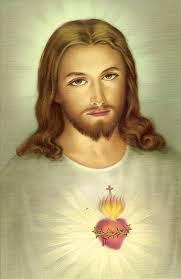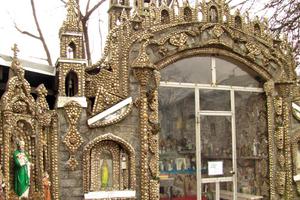Running on Empty
California Water Crisis Has Ecological, Economic and Spiritual Dimensions
FRESNO, Calif. — In January, after 720 wells ran dry in Porterville, Calif., Bishop Armando Ochoa of Fresno encouraged students at a local parochial school to launch a drive for donated drinking water and promised to bring pizza to the class that collected the most bottles.
“The students collected 1,100 cases of bottled water that were shipped to Porterville,” Bishop Ochoa told the Register.
“It was a wonderful moment, and I was deeply touched. Grandparents told me, ‘It is good for the kids to be on board.’”
Six months later, as U.S. Catholics welcomed Pope Francis’ ecological encyclical, Laudato Si (The Care for Our Common Home), the impact of Mother Nature continues to resonate in a unique and painful way in Fresno, where more wells have run dry as a four-year drought forces farmers to leave some of the globe’s most fertile cropland fallow.
On June 24, Bishop Ochoa marked Pope Francis’ message in an op-ed, co-authored with two other California bishops, which underscored the encyclical’s relevance for local Catholics.
The drought “has hurt the health of our residents, risked the vitality of our waterways and harmed our regional economy,” noted Bishop Ochoa, Bishop Stephen Blaire of Stockton and Bishop Jaime Soto of Sacramento in a column that did not blame human actions for the drought, but echoed the Pope’s warning that the poor were most likely to be harmed by such crises.
“Californians must learn to steward responsibly and reverentially our portion of God’s creation,” they concluded.
Msgr. Raymond Dreiling, the vicar general of the Fresno Diocese, agreed that Laudato Si would stir discussion among local pastors and the faithful.
“The encyclical is on the radar,” Msgr. Dreiling told the Register.
But the social and economic disruption caused by the Golden State’s historic drought remains his most urgent concern.
“It is a real crisis,” he said.
The parched land has driven laid-off farm workers onto public assistance and left farm owners scrambling to shift to crops that require less water. Pastors have reached out to the needy, even as the cascading crisis weakens an array of local businesses, large and small, and results in reduced giving to the weekly collection and food bank.
“The conversation at the last priests’ conference meeting was about how we can respond in our parishes to the crisis,” said Msgr. Dreiling, as he recalled a visit to Seville, a remote part of the diocese, where field workers gathered in a field for the liturgy. “It’s having an impact on the life of community and the maintenance of [parish-based programs], because income has gone down.”
During the past year, Catholic Charities for the Diocese of Fresno, which also serves Merced and Bakersfield, helped 142,000 clients. And while many residents have found ways to adapt to disruptions caused by the drought, Kelly Lilles, Catholic Charities’ executive director, fears the situation will spiral downwards as more residents lose their jobs.
“If the drought continues, we will not only see more people coming to our food bank, we will lose donations from farmers who give us their overage — extra produce that can’t be sold on the market but is still good. I am concerned about the future,” Lilles told the Register.
Who Should Bear the Brunt?
Indeed, the story of the California drought reveals the difficulty of mobilizing residents in a vast and diverse state around the promotion of specific policies. From affluent coastal cities to inland farming communities, and from the wetter north to the drier south, personal experience and regional perspectives fuel heated discussions about who should bear the brunt of water rationing.
“Farmers consume four times as much water as California’s cities and towns, and they produce a huge portion of the country’s crops,” stated one story about the drought in the Los Angeles Times, which referenced a widely cited — and disputed — 2015 report from the Legislative Analyst’s Office. “But they contribute only 2% to the state’s gross domestic product.”
In April, concerns about agriculture’s use of water intensified as state authorities ordered residents in urban areas to cut their domestic consumption by 25% or more, with large penalties for those who fail to comply. At that time, the snowpack in the Sierra Nevada — the source of 30% of the state’s supply of fresh water — was only 5% of the average for that time of year.
On June 12, state farmers with senior water rights secured more than a century ago were informed by the State Water Resources Control Board that they must halt pumping from the Sacramento and San Joaquin watersheds. Water for irrigating their farmland must now come from reservoirs and wells and through the pricey open market.
Further, as Californians adapted to the drought, an explosive debate over federally mandated environmental policies, which divert water to protect endangered fish in state waterways, exposed sharp political divisions. Farmers argue that the diversion of water to protect fish has reduced the already dwindling supply available for agriculture, while environmental groups have successfully defended the policy.
What is not in dispute is that the drought has hit farmers and farm workers hard. In June, researchers at the University of California at Davis released a report, which held the drought responsible for a $2.7-billion decline in state revenue and job losses totaling 18,000 in 2015 alone.
Back in Fresno, Bud Elliott, a retired co-anchor for the local NBC affiliate, who has written about the drought, believes that both sides of the story have not been given equal attention in media coverage.
“One reason there is such a shortage of water available now is that the rules were changed when environmental uses” began to influence water allocated by the water board, said Elliott, a parishioner at St. Anthony of Padua parish.
He argued that environmental policies resulted in the diversion of a much larger share of state water than publicly stated, and he cited reports that place agriculture’s share of state water at 40%, not 80%.
“The change brought environmental interests to the front of the line, and, suddenly, the system was not adequate to serve a growing population.”
Elliott agreed that many state residents, including those living in the Central Valley, backed the decision to restore rivers and protect the fish habitat. “But now there is resentment that the water for agricultural interests has been shut off,” he told the Register.
Manuel Cunha Jr., president of the Nisei Farmers League, an agricultural organization that works with growers and farm workers, expressed frustration that more Californians seem to be blaming farmers for using too much water. “Farmers don’t hog the water; they take the water to grow food,” Cunha told the Register. “It takes work, dedication, and nobody cares, because we have enough food in the U.S. But, one day, we could lose this great food source.”
Yet the dire situation on the ground has also brought the people of Fresno together as they confront a common threat and assist those in greatest need.
Msgr. Scott Daugherty, the pastor of St. Anne’s Church in Porterville, where more than 1,000 wells have now gone dry, has witnessed the impact on the east side of town, where many residents live in an unincorporated area that once depended on groundwater from California’s annual snow melt.
“Rural areas, which have wells that have gone dry, are in pretty bad shape, and those who can afford to have a well dug must wait a long time,” reported Msgr. Daugherty.
During an interview with the Register, Bishop Ochoa did not address the debate over water management and consumption that has divided Californians. But he acknowledged the often-glaring disparities in the drought’s impact across the state.
“I am from the Archdiocese of Los Angeles, and when I go home, it is a different world, though it is only three and half hours away,” said Bishop Ochoa. “There is no full appreciation about what is happening [in L.A.] because they are not experiencing it. Their grass is still green; it is a non-issue.”
However, when he visits parishes across the Fresno Diocese, the bishop has seen the pain inflicted on both employees and employers.
“Many of our dairy owners are Catholics, and so are the workers,” he said, referencing another sector of the economy that is suffering.
Farmers with large holdings in various parts of the region, or beyond, have adapted by developing new crops or shifting their operations to other localities. Workers, in turn, have been forced to live apart from their families, in order to pick up work wherever they can find it.
Still, Bishop Ochoa has also witnessed the grace and power of the sacraments as parish communities come together during hard times.
“The best thing I can bring to them is the Bread of Life,” he said.
“The message is one of hope. I am there as their bishop, and we pray that they will have rain for the harvest. I wish there was more I could do.”
- Keywords:
- July 12-25, 2015

















